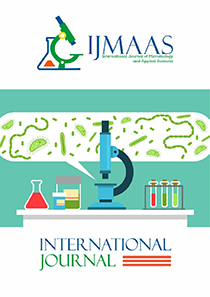Antibiogram and Plasmid Profile of Foodborne Bacteria Isolates from Fermented Melon (Cucumeropsis manii) Seed
Vol 3, Issue 1, 2024
KEYWORDS
Fermented melon seed, foodborne bacteria, antibiotics resistance, public health, plasmid profile
Abstract
Fermented melon (Cucumeropsis manii) seeds are used as condiment for cooking different delicacies in Nigeria. The microbiological quality and safety of fermented melon seed is critical for public health since it is a popular and commonly used condiment in soups. Nine bacteria isolates from fermented melon (Cucumeropsis manii) seed samples were used for this study. Morphological and physiological characterization identified the isolates as Staphylococcus epidermidis, Staphylococcus aureus, Bacillus subtilis, Lactobacillus spp, Escherichia coli, Proteus vulgaris, Serratia marcesceus, Enterobacter spp and Salmonella typhi. The bacteria were evaluated for antibiotic sensitivity and plasmid analysis using Alkali-lysis method. Among the organisms, the most frequently occurring and predominant isolates were Staphylococcus epidermidis, Staphylococcus aureus, Bacillus subtilis, and Escherichia coli with 22% occurrence followed by (Lactobacillus spp, Proteus vulgaris, Serratia marcescens, Enterobacter spp and Salmonella typhi) which have 11% occurrence. The antibiotic susceptibility testing revealed that all the isolates exhibited multiple drug resistance being resistant to two or more antibiotics. The antibiotic which was most effective in inhibiting the isolates were pefloxacin (PEF) and Amoxicillin (AM) with sensitivity of 100%. Whereas the least effective antibiotics were Zinacef (Z) and Rocephin (R) sensitivity of 44%. The most resistant isolate is Enterobacter spp. with 90% (9 out of 10) resistance of assayed antibiotics. The analyzed isolates were seen to possess significant level of p<0.05, with values ranging from 0.0±0.00 to 8.0±0.00. Furthermore, molecular studies revealed that, all the isolates contained plasmids. The result obtained in this study is of public health significance and concern as it highlights the need for systematic approach in the control of microbial contaminants in foods as this may be a potent source of antimicrobial drug-resistant microbial strains into the population.
Current: Vol. 4, Issue 1, 2025

Call for papers
The International Journal of Microbiology and Applied Sciences warmly welcome your valuable articles for publication.
